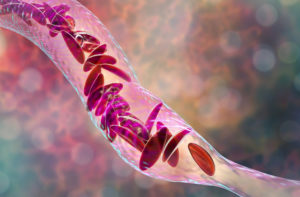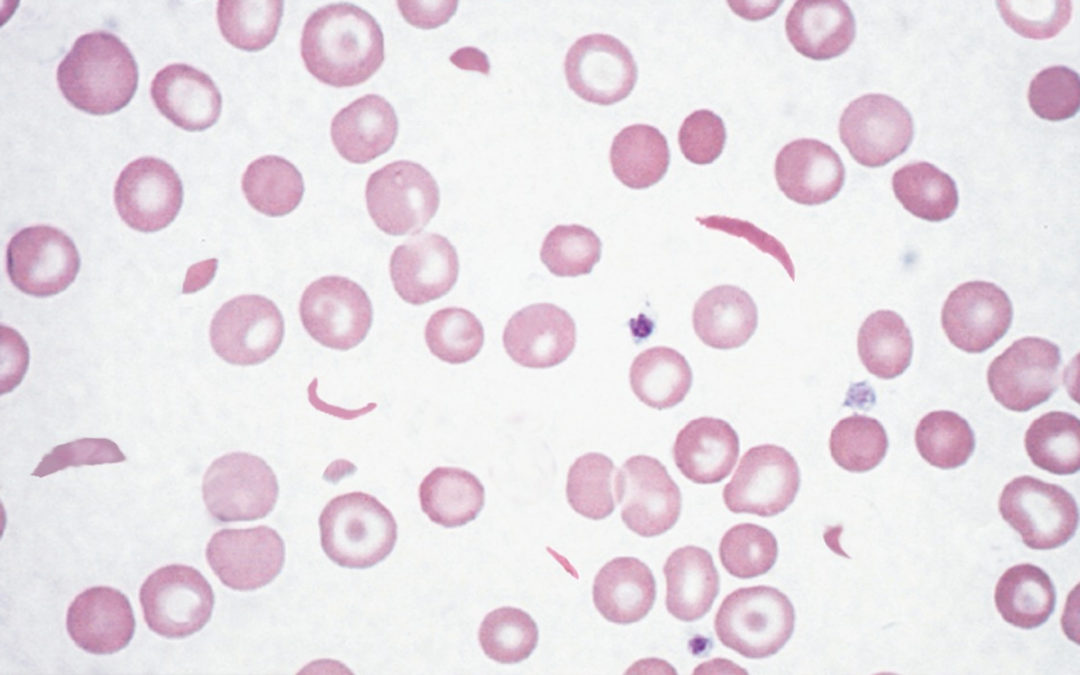Kellen Simpson is working late. Launching a software business has been a huge undertaking for the 27 year old computer geek-turned entrepreneur, and he has learned to step into any role in the company on short notice.
Tonight he is debugging software written by one of his employees, who is on vacation. It is amazing how tiny errors can throw the whole algorithm off. Everything must be precise for a computer program to work. Meticulously he pores over the code, analyzing line after line, searching for glitches in the logic.
SUDDEN DECOMPENSATION
Growing stiff and tired, Kellen rubs his eyes and stretches. A shiver runs through his body, and he coughs a few times. He pulls on a jacket and keeps working, but he has trouble focusing, and his mind is cloudy.
Then it starts…the old nightmare. His lower shin begins to ache. Over the next two hours the pain intensifies to a vicelike grip, tightening on his ankles, an elbow, the left shoulder blade, and back. This painful crisis is sickeningly familiar to Kellen, recurring in episodes since his childhood.
But now his disease adds a new twist – chest pain. The pain makes it hard to take a deep breath. A smothering panic grips Kellen, then a violent shaking. Slipping from his seat, he curls up on the floor, coughing and moaning as his trembling fingers dial 911. His teeth chatter as he gasps for help.
A GRAVE GRIDLOCK
When Kellen arrives in the Emergency Department, he is in life-threatening respiratory distress, with ash-blue lips and fingernails. As I detailed in an earlier post, the problem is with his red blood cells. Instead of squeezing flexibly through his blood vessels, the tiny disc-like structures have gone rigid. Even worse, they have lost their normal roundness and become freakishly long, like sickles. These stiff, spindly cells have gummed up the routes for oxygen delivery.

We must take drastic action. If his own red cells are gridlocking his circulation, the only option is to tow them away like overturned trucks and then import an alternative fleet of delivery vehicles from another company – or in this case another person! Thus we immediately begin “exchange transfusions,” a procedure in which Kellen’s blood is removed and replaced with transfused, normal blood from a donor.
As the donor blood drips into his vein, Kellen gradually settles down. In another IV we are infusing antibiotic therapy for pneumonia, the acute infection that has triggered a flare in Kellen’s lifelong condition. Over the next day, his oxygen saturation rises, his breathing slows, and his pain lessens. Even his color looks healthier. Kellen is going to make it – at least until the next crisis.
INHERENT (INHERITED) FLAWS
Why the crisis? What went wrong with Kellen’s cells in the first place?
The human body, just like a computer program, can be infected from outside by a virus. At other times a person or a computer can be sickened by a problem from within.
Like the program that Kellen has been working to debug, our bodies can have intrinsic flaws in their “code” that throw off their function. Everything must be precise in all our bodily systems for us to remain healthy. Even the tiniest problem can crash the whole person.
In Kellen’s case the problem is truly tiny, but terribly serious. To understand it, we will have to go very deep inside of Kellen’s body – in fact, to the core of his being.
A DEEP DIVE
We sometimes refer to “marrow” when we want to indicate how deep-seated something is within us – how profoundly we experience it. Marrow is the organ that manufactures blood cells. Our bones are far inside of us; yet marrow is even inside of them. Nevertheless, there is something even deeper.
Within the marrow itself, dropping down to the level of the microscopic, are the individual cells that comprise the marrow. Could we possibly get more interior than that? Yes, to locate the source of Kellen’s sickness we have to plunge onward, within a tiny cell itself and from there descend ever inward to the center of the cell, the nucleus.
Penetrating the nucleus, we encounter a large molecule in the very heart of the cell: DNA. Now that is truly deep within our being, especially considering that DNA is something that we have since the instant of our conception, and biologically it defines our sex, race, hair color, height, and many other aspects we consider fundamental to who we are.
But our journey is not at an end. In some ways we have just begun our inward journey, for the DNA is like an extensive library of information, and to find Kellen’s problem, we are going to have to do some research.
Entering this cavernous library, we descend to the recesses of the lower levels. Walking through stack after stack, we stop and peruse a particular shelf and then select a single, lengthy book. Now we must pore over every word. We must painstakingly read Kellen’s story.
And finally, there it is. Buried deep in the massive tome is a single misprint of one letter. That single typing error has rewritten the story of Kellen’s life.
THE PRECISION OF DNA (AND EVERYTHING ELSE IN YOUR BODY)
The discovery of DNA is one of the greatest scientific breakthroughs in history, and it has profound implications. DNA is a long molecule in your every cell, containing coded instructions for all the processes that happen in your body and forming a blueprint for a unique human being: you.
Imagine that your DNA is a long ticker tape of paper with a huge string of letters written on it. Inscribed there in a chemical alphabet of just four characters is a book over three billion (3,000,000,000) letters long, comprising twenty-three chapters known as chromosomes.
How lengthy is this minute instruction manual? If you were to read aloud continuously the letters in the DNA from just a single cell in your body, you would be speaking for nine and a half years! Now that is hardly casual beach reading! By comparison, Tolstoy’s lengthy novel War and Peace contains a mere 560,000 words.
And yet Kellen is gravely afflicted with sickle cell disease (for that is what he has) because of a substitution in a single letter of that entire blueprint. In the cellular instructions for assembling hemoglobin, there is a misprint of just one letter. As a result, one link (or amino acid) in the long protein chain of the hemoglobin molecule is different from normal, (specifically causing glutamic acid to be replaced with valine at the sixth position). The consequence is a proverbial “weak link” scenario. The resulting hemoglobin within his red blood cells does not function normally. This error – and the burden of living with Sickle Cell Disease with its terrible suffering and shortened lifespan – was passed to Kellen because each of his parents had an error in their DNA.

What an incredible and catastrophic difference a single letter can make! It stands to reason that a printing error of just one letter in a lengthy volume would have no impact on the sense of the book. But sometimes the location and specifics of even a seemingly insignificant error can make a word – I mean a world – of difference.
What does this have to do with the glory of God? We will answer that in the next blog. But we will step back to look at the big picture, not the tiny one.
Dr. Bill Maynard
